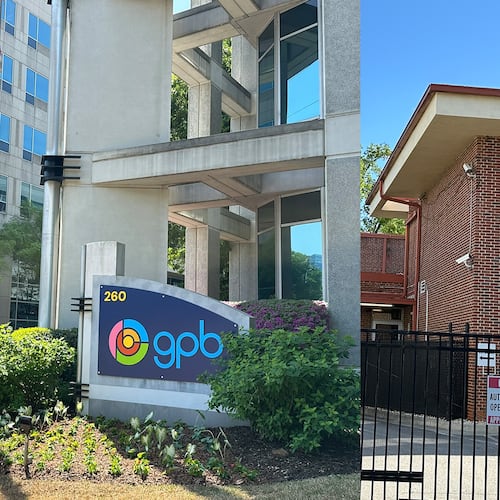Russell “Rusty” Hawthorne got a couple sentences into his graduation speech before he choked up.
Not that emotion during such ceremonies is unusual.
Minutes before, the 49 grads had marched in to the sounds of “Pomp and Circumstance” wearing caps and gowns while friends, family members and various officials looked on with satisfaction.
Also not unusual.
But the scene was a prison – Coffee Correctional Facility in Nicholls – and Hawthorne a recently released inmate who had returned to collect his certificate in welding.
“People ask me why I’d go back to a prison,” he said. “I am grateful and that I am actually proud to come back.”
Something started to catch in his throat.
“I’ve never completed anything like this,” he said. “It’s something to be proud of, guys.”
Coffee is operated by CoreCivic, the former Corrections Corporation of America, which is based in Nashville and has about $1.74 billion in annual revenue. It operates six prisons in Georgia.
To accommodate training programs, CoreCivic built two 6,300 square foot, $2.1 million centers, one at Wheeler Correctional Facility in Alamo, the other at Coffee.
The Dec. 8 ceremony in Coffee marked the first class to graduate from the new welding and diesel maintenance training program, run in partnership with the state Department of Correction, Oconee Fall Line Technical College and Wiregrass Technical College.
The initiative was given momentum by Gov. Nathan Deal's "High Demand Career Initiative," a report that called for greater effort in teaching skills that are in short supply.
Deal included both welding and diesel maintenance as skills in demand.
The principal conduit for the governor's goals is Central Georgia Technical College, which has a division devoted to "re-entry" after prison. In the past fiscal year, CGTC has served more than 1,600 inmates in credit and non-credit programs, said Alison Tyrer, spokeswoman fior the Technical College System of Georgia.
Among the highlights is a welding program at all-women's Lee Arrandale State Prison in Alto.
A Rand Corp. study showed that inmates given education are less likely to return to prison. For every dollar spent on inmate education, overall costs of incarceration are cut by $4-$5 during the next three years, Rand found.
CoreCivic cites similar studies that show inmates receiving education are 43 percent less likely to return to prison. As for work, the research says vocational training makes it 28 percent more likely that after release, a former inmate can find and keep a good job.
CoreCivic, which has come under fire periodically as a for-profit company that may skimp in ways that serve the bottom line and not justice. The company says this program is evidence of its commitment to do the right thing – especially in preparing inmates for re-integrating in the community.
“We know that education and training dramatically increase the odds of success after release,” said Damon Hininger, the company’s chief executive and president. “We can provide new opportunities that will, hopefully, change lives.”
There are other pragmatic reasons to train inmates, said economist Jeff Korzenik of Fifth Third Bank: The economy needs more workers.
“When you get to the point where are you are running out of the people that you need to fuel an economic expansion, you start to see the seeds of the next recession,” he said. “And a lot of the shortages are in the traditional trades and in manufacturing. Although they might be small in number compared to the overall labor force. They are jobs that feed the rest of the economy.”
That notion does depend on the willingness of employers to hire ex-inmates – and a reluctance to hire may be one reason so many men of working age have fallen out of the workforce, he said.
Still, the potential impact of making inmates and ex-mates more productive is huge, Korzenik said: More than 2.2 million people are incarcerated in federal and state prisons, as well as county jails. Nearly 4.8 million Americans are on probation or parole.
In Georgia, state prisons hold nearly 52,000 felony offenders and county jails hold several thousand more.
Economists have been puzzling about the decline in the share of Americans in the labor force. That shrinkage deprives the economy of productive workers, Korzenik said. “Re-entry from incarceration is our biggest labor force opportunity.”
If the CoreCivic program is to succeed, people like Rusty Hawthorne must come out of prison with buffed-up skills, get a job and stick with it. Two of those boxes are checked: He is living with his family, working as a welder.
Hawthorne has spent years in and out of prison, his most recent stint coming on drug charges.
Most of the other graduates are still behind bars, but the program is targeted at short-timers – within a few years at most, they should be back on the street and – the hope is – with a job.
About the Author
Keep Reading
The Latest
Featured




